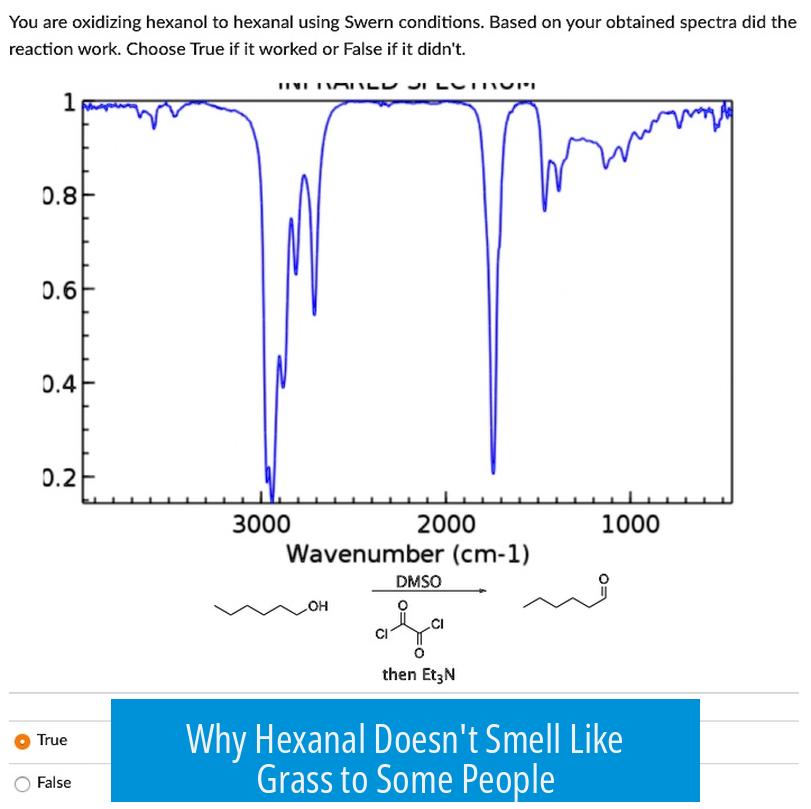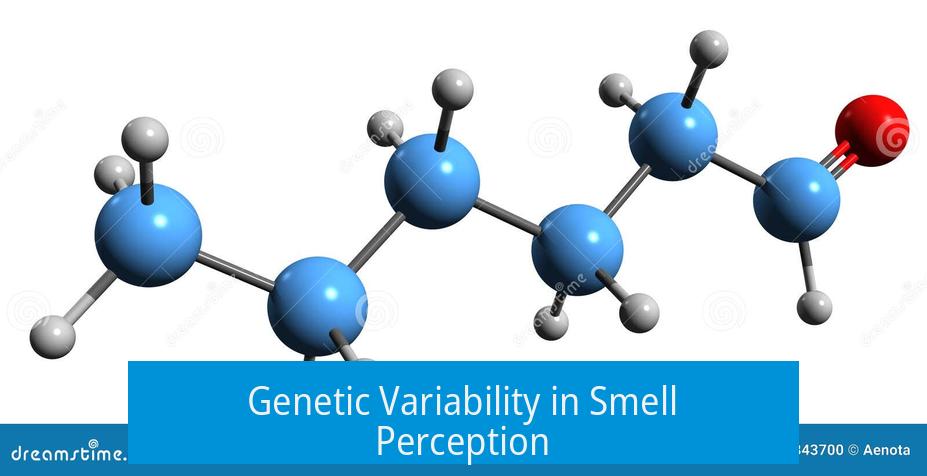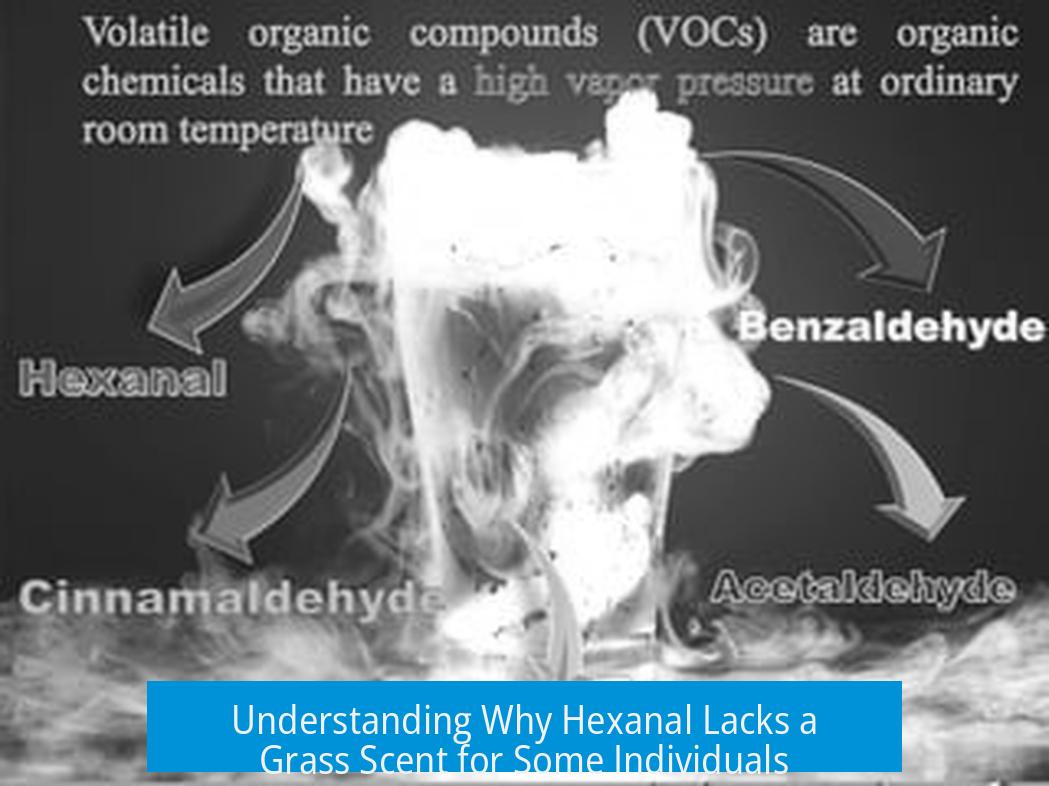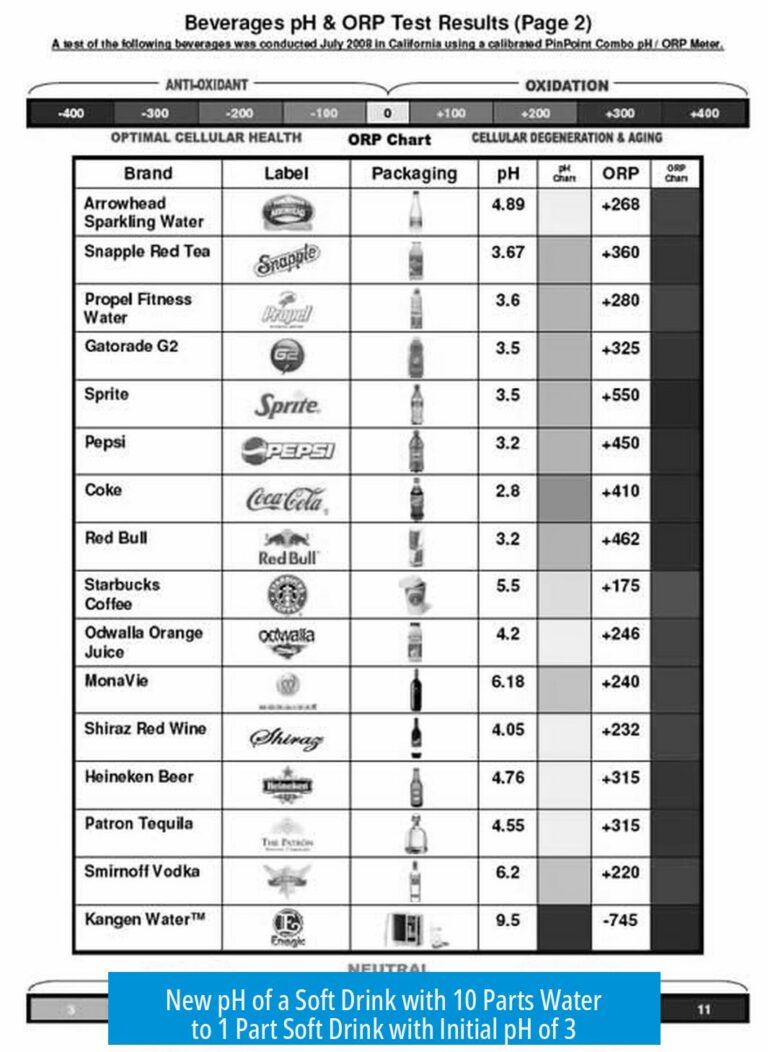Why Hexanal Doesn’t Smell Like Grass to Some People

Hexanal does not smell like grass to everyone because individual genetic differences, the chemical’s actual odor profile, and testing conditions influence how it is perceived. The commonly assumed “fresh cut grass” scent often gets misattributed to hexanal, but other factors explain why your perception differs.
Genetic Variability in Smell Perception

People experience odors differently due to variations in olfactory receptors. Humans have about 400 types of these receptors, and genetic differences mean some receptors are missing or altered. This variance affects how smells register.
- Similar to how some people taste bitterness in PTC paper, others cannot.
- Smell perception differs widely even among close groups.
- Partial anosmia (loss of smell) affects about 3% of people and can be congenital.
Past illnesses like mild COVID-19 may alter or reduce smell sensitivity, though some odors remain consistent.
Chemical Identity and Scent Profile of Hexanal
Hexanal is a volatile aldehyde often described as fruity or pungent but is not primarily associated with the fresh cut grass smell.
- Hexanal’s scent resembles fruity notes more than green or grassy ones.
- The “freshly cut grass” aroma is mainly caused by cis-3-hexen-1-ol, not hexanal or hexanol.
- 2-Hexenal has limited grassy character, while cis-3-hexenal is the dominant source of that smell.
Hexanol is sometimes described as smelling like Play-Doh, confirming the varied odor profiles of related compounds.
Influence of Concentration and Formulation
The aroma of hexanal can change drastically based on concentration and whether it is diluted:
- Pure hexanal might smell stronger and different from diluted samples.
- Odor descriptions often refer to diluted or environmental contexts, not pure standards.
- Testing environment, temperature, and solvent residue can alter perception.
Key Takeaways
- Individual genetics strongly affect how hexanal’s scent is perceived.
- Hexanal’s true smell is fruity, not grassy. The cut grass smell mainly comes from cis-3-hexen-1-ol.
- Health and past infections like COVID-19 might influence smell sensitivity.
- Hexanal odor varies with concentration and sample form.
Why Does Hexanal Not Smell Like Grass to Me? A Deep Dive Into Smell Perception
Hexanal doesn’t smell like grass to me because the chemical responsible for the classic “freshly cut grass” aroma is not hexanal, but rather cis-3-hexenal or cis-3-hexen-1-ol. Also, individual genetic differences and even health factors such as anosmia or viral infections influence how one perceives the smell of hexanal.
So, if you’re scratching your nose wondering why that “grassy smell” just doesn’t register when you sniff hexanal, you’re not alone. Let’s unravel this aromatic mystery together.
The Grass-Smelling Chemical Mix-Up
Many people, especially those new to olfactory chemistry, incorrectly assume hexanal is the culprit behind the iconic smell of freshly mown lawns. Truth is, it’s cis-3-hexenal and its close relative cis-3-hexen-1-ol that cause that unmistakable green, sharp, fresh cut grass scent.
Hexanal belongs to aldehydes but carries a notably different scent profile. It’s often described as fruity rather than grassy. Imagine a pet store with strong pungent odors—that’s where hexanal’s smell might come rushing in. In some lab fridges, hexanal is the most pungent chemical aroma, but it’s not the smell of your neighbor’s lawn mower.
In fact, experts note that 2-hexenal also plays a role but doesn’t convey that freshly cut grass vibe the same way cis-3-hexenal does. This subtle distinction might explain why sniffing hexanal leaves some of us puzzled.
Genetics: The Invisible Nose Conductor
If hexanal’s smell seems “off” or just doesn’t register as expected, it’s not necessarily your imagination. Your genetics might be orchestrating your experience in ways you didn’t consider. Just like tasting PTC paper is a classic genetic quirk (some people find it extremely bitter, others tasteless), smell perception is a similar genetic roulette.
We each have about 400 olfactory receptors. However, not everyone has the full set. Some gene variants mean you’re missing specific receptors, which can mute or twist how you experience certain smells. Imagine attending a concert where half the instruments are missing; it wouldn’t sound the same, right?
Many chemistry students report that solvents and chemicals smell completely different from person to person. It’s science’s quirky way of saying, “Your nose, your rules.”
Health Matters: Is Your Smell Working Full Steam?
Have you had COVID-19? Even a mild case might leave your scent perception slightly askew. Around 3% of people experience anosmia, the reduction or total loss of smell, often due to congenital causes or viral infections.
Some people still report incomplete recovery from COVID-related smell changes, which can alter how chemicals like hexanal register. However, it’s worth noting that certain smells remain stable regardless of COVID-19, so this might not be the full explanation.
Concentration Counts: Smells Change with Strength
If you’ve tested a sample of hexanal diluted in a solvent or part of a fragrance blend, what you smell might be far from how pure hexanal smells in a lab bottle. Pure chemical standards rarely smell “as described” because concentration plays a hefty role.
A highly diluted solution can mask or alter the primary scent notes. So, if your hexanal sample was not pure, the grassy scent—or lack thereof—may owe to this factor. Smelling the pure standard versus a diluted solution is like comparing a spotlight to a dim flashlight.
Hexanol and the Play-Dough Confusion
A quick sidebar: hexanol is a close chemical cousin to hexanal and often smells like Play-Doh. Some people confuse these two quite a bit because their names are similar. Hexanol’s scent is very different and distinct from the fresh grassy smell people expect. So if you’re thinking “grass” but smelling “Play-Doh,” it may mean you’re sniffing hexanol instead of hexanal or cis-3-hexenal.
Practical Tips For Clarifying Your Smell Experience
- Identify the chemical precisely: Double-check if you have hexanal, hexanol, or cis-3-hexenal. They smell different.
- Test concentration levels: Sniff pure standards if possible, not dilutions, for accurate scent profiles.
- Consider your genetic background: Accept that your individual receptors shape your unique smell world.
- Reflect on recent health factors: If you’ve had COVID or smell loss, be patient. Recovery can be slow and partial.
- Use smell comparisons: Try smelling freshly cut grass next to your sample to train your nose on differences.
Why Does This Matter?
Understanding why hexanal doesn’t smell like grass is not just a trivia tidbit for chemists or perfume enthusiasts. It reflects the rich complexity of human perception. Our noses tell stories of genetics, health, and chemistry that often go unnoticed in daily life.
Plus, if you work with fragrances, flavors, or food, knowing exactly which chemicals give you specific aromas can save you bottlenecks in product development.
“Smell is a personal and complex sense influenced by biology and environment. What smells like fresh grass to one might be fruity to another.”
Final Sniff
Next time you sniff hexanal and don’t smell grass, give your nose a quiet nod. You’ve just glimpsed a fascinating intersection of chemistry and human biology. Your experience is unique, and it reminds us that smell is far from universal—it’s deeply personal.
Curious? Try smelling cis-3-hexenal if you ever get a chance. It just might put a smile on your nose.
Why doesn’t hexanal smell like grass to me?
Hexanal’s smell is often described as fruity, not grassy. The fresh cut grass scent is usually from a related compound called cis-3-hexenal. You might be confusing the two chemicals.
Can genetics affect how I perceive the smell of hexanal?
Yes. People have different olfactory receptors due to genetics. This makes smells seem different from person to person. Your genes might cause hexanal to smell unlike grass to you.
Could I have a loss or change in smell that affects how hexanal smells?
Partial smell loss or anosmia can alter how you perceive odors. COVID-19 is known to change smell perception, though it doesn’t affect all smells equally. This might affect your sense of hexanal’s scent.
Does the concentration of hexanal change how it smells?
Yes. Pure hexanal and diluted solutions can smell very different. Pure samples often don’t match their typical smell descriptions. How you sniff it could impact your perception.





Leave a Comment